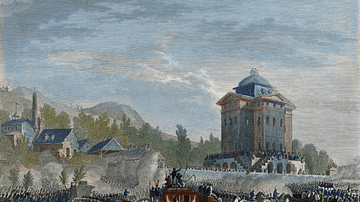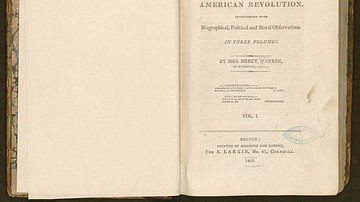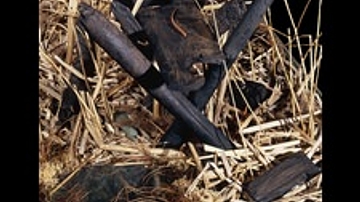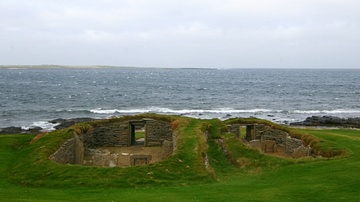Search
Search Results

Image
Haitian Revolution
Attack and take of the Crête-à-Pierrot (4-24 March 24, 1802) during the Haitian Revolution. Original illustration by Auguste Raffet, engraving by Ernst Hébert, published in Histoire de Napoleon, by M. de Norvins, 1839.

Definition
Camille Desmoulins
Camille Desmoulins (1760-1794) was one of the most prominent journalists during the French Revolution (1789-1799). A fervent republican, he played an important role in the Storming of the Bastille, when he called the people to arms. Although...

Definition
Louis XVI of France
Louis XVI (l. 1754-1793) was the last king of France (r. 1774-1792) before the monarchy was abolished during the French Revolution (1789-99). An indecisive king, his attempts to navigate France through the crises of the 1780s failed, leading...

Definition
Flight to Varennes
The Flight to Varennes was a pivotal moment of the French Revolution (1789-1799), in which King Louis XVI of France (r.1774-92), his wife Queen Marie Antoinette (1755-93), and their children attempted to escape from Paris on the night of...

Image
Execution by Guillotine in the Place de la Revolution
Execution by guillotine in the Place de la Revolution (modern-day Place de la Condorde) in Paris, during the Reign of Terror. By Pierre-Antoine Demachy c. 1807.

Image
Causes of the American Revolution
This infographic illustrates the Causes of the American Revolution (1765-1789) rooted in a growing sense of American identity and dissatisfaction with British policies. The colonies, long accustomed to self-governance under the system of...

Image
History of the Rise, Progress, and Termination of the American Revolution
The Rise, Progress, and Termination of the American Revolution by Mercy Otis Warren, Boston, 1805.
Library of Congress, Washington D.C.

Image
Reflections on the Revolution in France Title Page
The title page of Reflections on the Revolution in France, first published in 1790 and written by Edmund Burke (1729-1797), the Anglo-Irish statesman and political thinker.

Definition
The Sweet Track
The Sweet Track is a Neolithic timber walkway, located in the Somerset Levels, England. It was originally part of a network of tracks built to provide a dry path across the marshy ground. The Sweet Track ran between what was then an island...

Definition
Knap of Howar
The Knap of Howar is a Neolithic site on the island of Papa Westray in Orkney, Scotland. The name is Old Norse for `mound of mounds' or `large barrow'. The building preserved at the site is considered the oldest stone house in northern Europe...